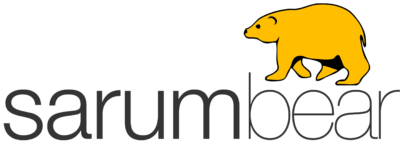A logo is a graphic design, an image that symbolizes an organization, a company. It is used for letterhead, advertising material, and signs as an emblem by which the company can easily be recognized. Whereas a Logotype is a graphic representation or symbol of a company name, trademark, abbreviation, etc., uniquely designed for ready recognition. In other words, a Logo or Logotype as a simple visual mark to identify your company product or service.
There are different types of signs and emblems easily recognized and associated with purposes. For example, crests are used to identify a country or family. There was a time when only big enough organizations could afford to make their own crest. They were in some cases very detailed drawing with many objects to enrich the crest. Cost was not an issue and more was considered better. Then flags were used due to their larger format. They were visible from the craft fields from long distances. Road signs were designed for informational purposes. They use such techniques as contrasting colours, simplified and yet stylish formats to identify and attract more attention and convey information.
Nowadays, the most popular and successful companies agree that “simpler is better”, especially today when everything is moving so fast you have less and less time to impress your customers. So it has to be done in a very stylish manner yet remaining conservative so that it`s easier for the eye to catch and the brain to memorize your logo design.
You have to consider the reproduction cost as well. More detailed and colourful logo designs are harder to reproduce and they of course cost more. You also have to consider the size that your logo is going to be used at. The perfect logo design will look great on a sign board as well as on a business card or on a pen for example.
We have talked about the general use of a logo. Now we are going to get into a more detail look at the logo.
Logomark

Logotype
A logotype refers to words or the name of a business that is designed in a special way. Examples include Pinterest, eBay, Yahoo, Coca-Cola or Google. When people talk about logo design, they are usually thinking about logotypes.
You can display the company name in a pre-existing font or else it can be customised to suit the specific needs of a company. Logotype often use a special typeface and letter styling, which becomes associated with a brand. Logotypes can also be made from geometric shapes with abstract letterforms to have a certain effect. There may also be corporate identity elements such as certain colours. However, you don’t need to use a symbol or icon to be effective, and that is the idea behind logotype design. When done correctly, using only typography to create a logo design can be an effective branding weapon.
Creating a Logo
Whether you intend to design your own logo or get Sarumbear involved, there are a few simple rules to follow:
- Logos must be designed in a vector application such as Adobe Illustrator, not on a image editor like Photoshop! The reason for this is that the logo needs to be scalable without losing its quality. It should be crisp regardless of whether it is printed on a tiny business card or a giant billboard.
- It is important that the logo can be reproduced in a single colour such as black or white while still being recognisable. Imagine how the logo will look on a newspaper advert or reversed out of a dark background.
- Your logo will be reproduced in various sizes and you may need it to be as small as a postage stamp to fit on stationery. Make sure that text and fine lines are still legible when the logo design is scaled down.
- While it is good to experiment with colours, it is best to keep a limited colour palette if possible. Specify corporate colours with CMYK or Pantone references to ensure correct colour reproduction once the logo is printed.
Refreshing established logos or logotypes
Like all areas of design, there are trends and fashions, including the design of logos. Looking back in time to the logotypes of long established companies, you can see slight changes every decade or so to the style and typeface of their logo. Unless you are consciously trying to look aged or retro then it is a good idea to re-brand your corporate identity when necessary. A good logo designer should consider this when choosing typefaces, colours and styles, unless the company wants to look young and trendy.
Companies have, over the years, renew their logos to fit in with contemporary design and to present more powerful images. Company logos can be emotive and can inspire loyalty by influencing the subconscious. Some logos incorporate an idea of the product; the steering wheel in the Mercedes logo, for example.
Your company may be much smaller compared to Mercedes, but trust us, your logo or logotype will have the same relative affect to you as it does to them.





